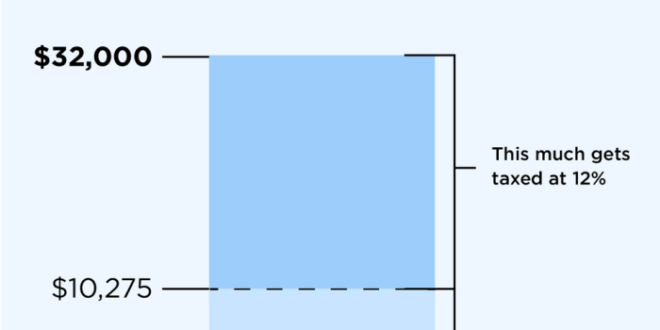Pendahuluan: Daftar Bantuan PIP 2025

Daftar Bantuan PIP 2025 – Program Indonesia Pintar (PIP) merupakan program bantuan pemerintah yang bertujuan untuk membantu anak-anak dari keluarga kurang mampu agar tetap dapat mengenyam pendidikan. Bantuan ini sangat penting karena memberikan kesempatan yang setara bagi mereka untuk meraih cita-cita, terlepas dari kondisi ekonomi keluarga. Tanpa PIP, banyak anak berpotensi putus sekolah karena kendala biaya.
Artikel ini bertujuan memberikan informasi komprehensif mengenai PIP tahun 2025. Kita akan membahas berbagai aspek penting terkait program ini, mulai dari kriteria penerima, besaran bantuan, hingga cara pendaftaran dan pencairan dana. Informasi yang disajikan akan mencakup gambaran umum program, perubahan yang mungkin terjadi di tahun 2025, dan langkah-langkah yang perlu dilakukan calon penerima.
Sumber informasi yang digunakan dalam artikel ini berasal dari situs resmi Kementerian Pendidikan, Kebudayaan, Riset, dan Teknologi (Kemendikbudristek) dan berbagai sumber berita terpercaya yang membahas PIP.
Mari kita mulai menjelajahi detail Program Indonesia Pintar 2025!
Kriteria Penerima PIP 2025
Kriteria penerima PIP 2025 diperkirakan akan masih berpedoman pada aturan sebelumnya, dengan beberapa kemungkinan penyesuaian. Secara umum, penerima PIP adalah siswa dari keluarga miskin atau rentan miskin yang terdaftar dalam Data Terpadu Kesejahteraan Sosial (DTKS) Kementerian Sosial. Selain itu, beberapa kriteria lain mungkin meliputi siswa yang memiliki prestasi akademik baik, berasal dari daerah terpencil atau tertinggal, serta memiliki kebutuhan khusus.
- Siswa dari keluarga miskin atau rentan miskin terdaftar di DTKS.
- Siswa berprestasi akademik baik.
- Siswa dari daerah terpencil atau tertinggal.
- Siswa dengan kebutuhan khusus.
Besaran Bantuan PIP 2025, Daftar Bantuan PIP 2025
Besaran bantuan PIP 2025 diperkirakan akan mengalami penyesuaian sesuai dengan kebijakan pemerintah. Besaran bantuan biasanya bervariasi tergantung pada jenjang pendidikan. Sebagai gambaran, pada tahun-tahun sebelumnya, besaran bantuan untuk SD/MI berkisar pada ratusan ribu rupiah per tahun, sementara untuk jenjang SMP/MTs dan SMA/SMK lebih tinggi. Perlu diingat, informasi ini bersifat estimasi dan akan lebih tepatnya dikonfirmasi melalui pengumuman resmi dari pemerintah.
| Jenjang Pendidikan | Estimasi Besaran Bantuan (Per Tahun) |
|---|---|
| SD/MI | Rp. 225.000 – Rp. 450.000 |
| SMP/MTs | Rp. 450.000 – Rp. 900.000 |
| SMA/SMK | Rp. 900.000 – Rp. 1.800.000 |
Angka-angka di atas merupakan estimasi dan bisa berbeda dengan besaran bantuan yang sebenarnya. Selalu cek informasi terbaru dari sumber resmi.
Cara Pendaftaran dan Pencairan PIP 2025
Proses pendaftaran PIP biasanya dilakukan melalui sekolah. Siswa yang memenuhi kriteria akan didaftarkan oleh pihak sekolah ke dalam sistem PIP. Setelah terdaftar, siswa akan menerima informasi lebih lanjut mengenai pencairan dana. Pencairan dana PIP dapat dilakukan melalui berbagai metode, misalnya transfer langsung ke rekening siswa atau melalui bank yang ditunjuk. Proses pencairan ini biasanya dilakukan secara bertahap.
- Pendaftaran dilakukan melalui sekolah.
- Informasi pencairan dana akan diberitahukan kepada siswa.
- Pencairan dana dapat dilakukan melalui transfer rekening atau bank yang ditunjuk.
Daftar Bantuan PIP 2025 memang penting, menjamin akses pendidikan bagi anak-anak kita. Namun, jangan lupa juga periksa aksesibilitas bantuan lain yang tak kalah krusial, seperti Cek Bantuan Pangan 2025 , untuk memastikan kebutuhan dasar terpenuhi. Ketersediaan pangan yang cukup sangat berpengaruh terhadap konsentrasi belajar, sehingga mendukung efektivitas bantuan PIP 2025 itu sendiri.
Jadi, selain mengecek daftar PIP, jangan lewatkan untuk memantau program bantuan pangan ini agar kesejahteraan anak-anak kita lebih terjamin.
Daftar Bantuan PIP 2025 memang penting, terutama bagi mereka yang membutuhkan. Namun, bagi para pedagang kaki lima, akses modal juga krusial. Nah, bagi yang berminat mengembangkan usaha, perlu diketahui juga adanya Bantuan Gerobak Gratis 2025 yang bisa menjadi solusi. Informasi lengkap mengenai program ini bisa dicari secara terpisah. Kembali ke PIP, pastikan Anda mengecek persyaratan dan pendaftarannya agar bisa mendapatkan bantuan tersebut.
Semoga informasi ini bermanfaat!
Daftar Bantuan PIP 2025 memang penting, terutama bagi siswa kurang mampu. Namun, bagi yang punya usaha, mendapatkan suntikan dana juga krusial. Nah, untuk para pelaku UMKM, informasi mengenai Bagaimana Cara Mendapatkan Bantuan UMKM 2 4. Juta 2025 Terbaru sangat relevan. Dengan tambahan modal tersebut, bisnis bisa berkembang, dan mungkin saja orangtua bisa lebih mudah membantu anak-anaknya yang terdaftar dalam Daftar Bantuan PIP 2025.
Jadi, jangan lewatkan kesempatan untuk mengeksplorasi kedua sumber bantuan ini.
Daftar Bantuan PIP 2025 memang penting, terutama bagi siswa kurang mampu. Namun, kamu juga perlu tahu program bantuan lainnya yang mungkin sesuai kebutuhanmu. Cek dulu informasi lengkapnya di Selain Prakerja Ada Bantuan Apa Lagi 2025 untuk melihat gambaran lebih luas. Setelah mengeksplorasi pilihan lain, kembali lagi ke detail Daftar Bantuan PIP 2025 untuk memastikan kamu tak melewatkan kesempatan mendapatkan dana pendidikan yang sangat bermanfaat ini.
Jangan sampai ketinggalan, ya!



